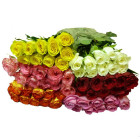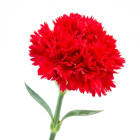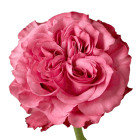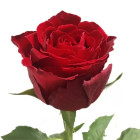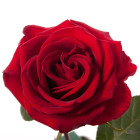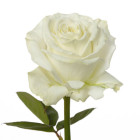
Top 15 Most Popular Houseplants in the UK
The Relevance of Choosing Houseplants
Plants as Interior Elements
In the modern world, where people spend a significant portion of their time indoors, houseplants have become an integral part of interior design. They not only decorate spaces but also bring vibrancy and comfort. Green plants can transform any interior, adding freshness and natural harmony. Regardless of the design style — whether minimalism, Scandinavian, or classic — well-chosen plants can emphasize individuality and create a unique atmosphere.
Health and Well-Being Benefits
In addition to aesthetic advantages, houseplants positively impact human health and well-being. They improve air quality by absorbing carbon dioxide and releasing oxygen. Some types of plants can purify air from toxins and harmful substances, which is especially relevant in urban settings. Moreover, taking care of plants helps reduce stress levels, improves mood, and enhances concentration. Having greenery indoors fosters a sense of natural balance and contributes to overall well-being.
Criteria for Plant Popularity in the UK
Ease of Care
One of the key factors influencing the popularity of houseplants is their ease of care. In today’s busy world, many prefer plants that require minimal attention. Species like Sansevieria or cacti are perfect for beginners or those with limited experience in plant care. They are resilient to various conditions and can thrive with infrequent watering and minimal maintenance.
Decorative Qualities
The appearance of a plant plays a significant role in its selection. People tend to choose plants that are not only functional but also complement their interior. The variety of shapes, sizes, and leaf colors allows everyone to find something that suits their taste. Exotic species like orchids (Orchidaceae) or monstera (Monstera deliciosa) attract attention with their unique beauty, becoming true decorations for any room.
Adaptability to Climate Conditions
The UK’s diverse climate affects the choice of houseplants. Plants capable of adapting to varying light and humidity conditions are particularly popular. Species resistant to temperature fluctuations and able to thrive in low-light environments are favorites among Britons. Such plants integrate seamlessly into various spaces, from sunny windowsills to shaded corners of apartments.
Top Houseplants
Hibiscus
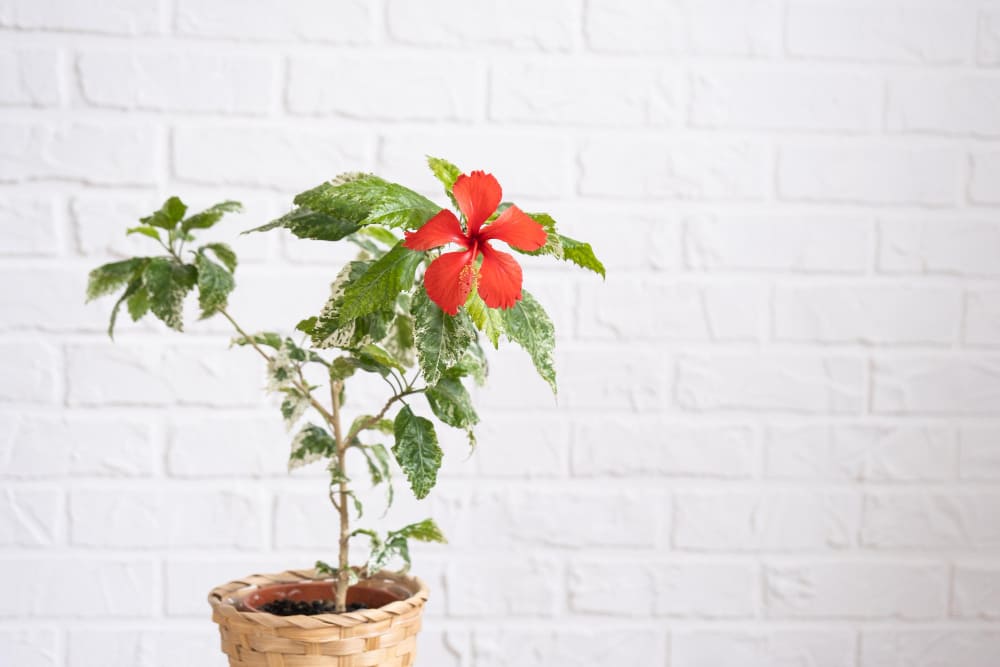
Plant Description
Appearance and Features
Hibiscus is a vibrant and exotic plant that impresses with its lush blooms and variety of forms. Its tall stems with large petals make a striking accent in any room. The dark green, glossy, oval, or heart-shaped leaves of hibiscus add elegance and sophistication to the plant.
Varieties of Hibiscus
There are numerous hibiscus varieties differing in flower shape, color, and size. Popular types include Chinese hibiscus (Hibiscus rosa-sinensis), Arnott’s hibiscus (Hibiscus arnottianus), and red-leaf hibiscus (Hibiscus acetosella). Each variety has unique characteristics, allowing you to choose the perfect option for any interior.
Care and Maintenance
Light and Temperature
Hibiscus thrives in bright, indirect light. The optimal temperature range for its growth is 18 to 24 degrees Celsius. It’s essential to avoid sudden temperature changes and drafts, as they can negatively affect the plant’s health.
Watering and Humidity
Regular watering is necessary to maintain soil moisture, but overwatering should be avoided. During the winter, watering is reduced to allow the soil to dry out slightly. Hibiscus also appreciates high humidity, so misting the leaves or using a humidifier can be beneficial.
Fertilizing and Repotting
Fertilize hibiscus in spring and summer using a balanced fertilizer for flowering plants. Repotting is recommended every 1–2 years with nutrient-rich, well-draining soil to provide the plant with essential nutrients and enough space for root growth.
Benefits and Decorative Qualities
Blooming and Aesthetics
Hibiscus is renowned for its stunning blooms, which can flower almost year-round with proper care. The vibrant and rich petal colors bring liveliness and joy to any space. Its blooming creates a festive atmosphere and lifts spirits.
Air Purification
Like many houseplants, hibiscus can purify air by removing harmful substances. It effectively absorbs carbon dioxide and releases oxygen, improving indoor air quality and creating a healthier living environment.
Orchid
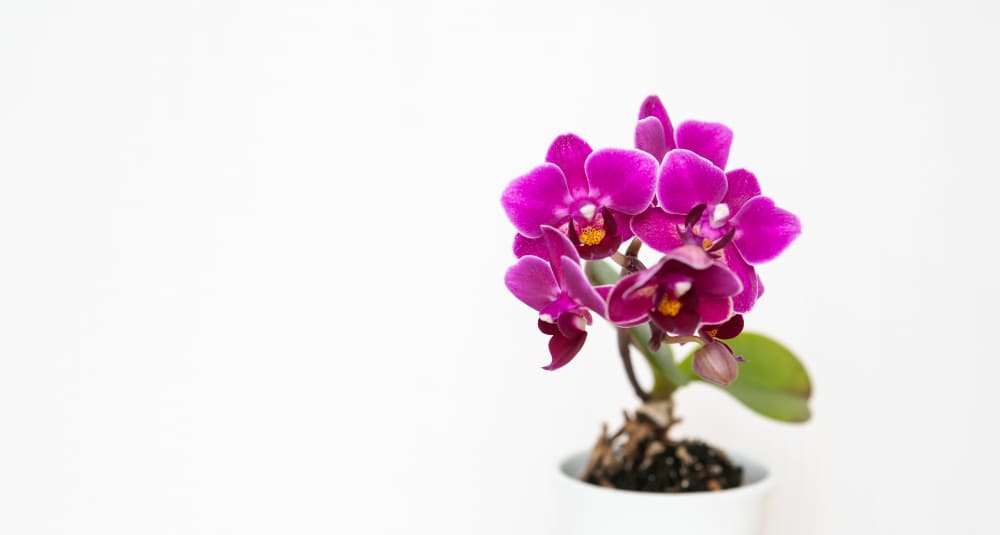
Plant Description
Types of Orchids
The orchid family (Orchidaceae) is one of the most diverse and exquisite groups of plants in the world. With over 25,000 species, they vary in flower shape, size, and color. Popular types include Phalaenopsis, Dendrobium, and Vanda, each boasting unique features.
Growth Characteristics
Orchids require specific conditions for growth and blooming. They are typically grown in hanging baskets or specialized pots with well-draining soil to ensure proper root ventilation. Orchids prefer a stable temperature range and high humidity, making them ideal for indoor cultivation when their requirements are met.
Care and Maintenance
Light Requirements
Orchids need bright, indirect light. Direct sunlight can scorch the leaves, so it’s best to place them near east- or west-facing windows, where they receive adequate light without overheating.
Watering and Humidity
Regular but moderate watering is essential for orchid health. Avoid waterlogging the pot to prevent root rot. The optimal humidity level for orchids is around 50-70%, which can be achieved using a humidifier or by misting the leaves regularly.
Fertilizing and Repotting
Orchids require regular feeding, especially during active growth and blooming periods. Use specialized orchid fertilizers and follow the instructions on the packaging. Repot orchids every 2-3 years using a specialized orchid mix that ensures proper drainage and aeration for the roots.
Benefits and Decorative Qualities
Elegance and Grace
Orchids are renowned for their refined beauty and elegance. Their delicate flowers with unique shapes and vibrant colors make them a standout feature in any interior, adding sophistication and style. Orchids can become a focal point in any space, captivating attention with their magnificence.
Long-Lasting Blooms
With proper care, orchids can provide long-lasting blooms that can last for several months. This makes them especially valuable for those who want to enjoy the beauty of flowers over an extended period. Additionally, many orchid varieties bloom regularly, offering exquisite blossoms year-round.
Sansevieria (Snake Plant) — Sansevieria trifasciata
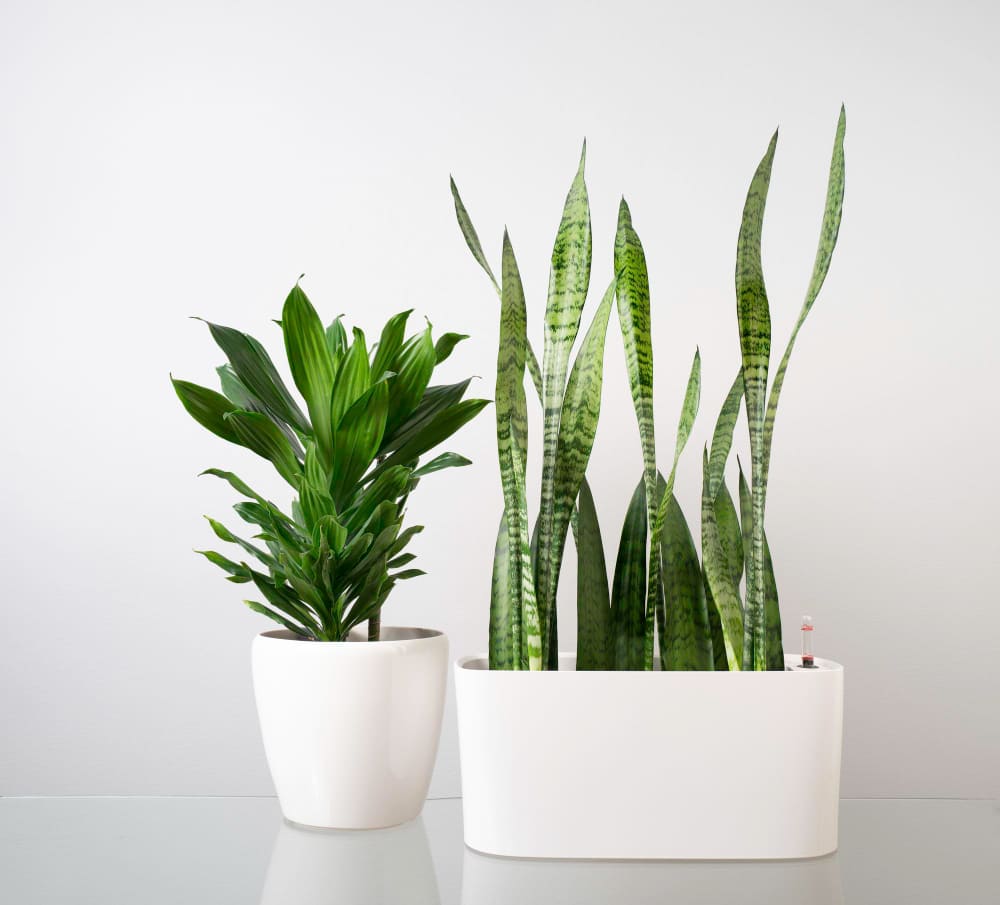
Plant Description
Appearance and Varieties
Sansevieria, also known as "Mother-in-Law’s Tongue" or "Snake Plant," with its scientific name Sansevieria trifasciata, is one of the most popular houseplants due to its low maintenance and attractive appearance. Its tall, stiff leaves grow vertically and can reach up to one meter in length. The leaves feature various shades of green with distinctive vertical stripes, adding to its decorative appeal. Popular varieties include 'Laurentii,' characterized by yellow edges, and 'Black Coral,' known for its dark green leaves with light streaks.
Care and Maintenance
Lighting Conditions
Sansevieria adapts well to various lighting conditions, making it an ideal choice for any indoor space. It can thrive in bright, indirect light as well as low-light conditions, although moderate light results in the best growth. Direct sunlight may cause leaf burns, so it’s recommended to place the plant in areas with diffused light.
Watering and Soil
One of the main advantages of Sansevieria is its ability to survive with minimal watering. Allow the top layer of soil to dry out completely before the next watering. During winter, watering can be reduced as the plant enters dormancy. Sansevieria prefers well-draining soil rich in organic matter to prevent water stagnation and root rot.
Benefits and Decorative Qualities
Air Purification
Sansevieria is known for its air-purifying qualities. It effectively absorbs harmful substances such as benzene, formaldehyde, and trichloroethylene, improving indoor air quality. It also releases oxygen at night, making it an excellent choice for bedrooms or offices.
Low Maintenance
Sansevieria’s resilience is one of its key advantages. It requires infrequent watering, is tolerant of temperature fluctuations, and grows well in various lighting conditions. Its hardiness makes it perfect for busy individuals or those new to houseplant care.
Aloe Vera
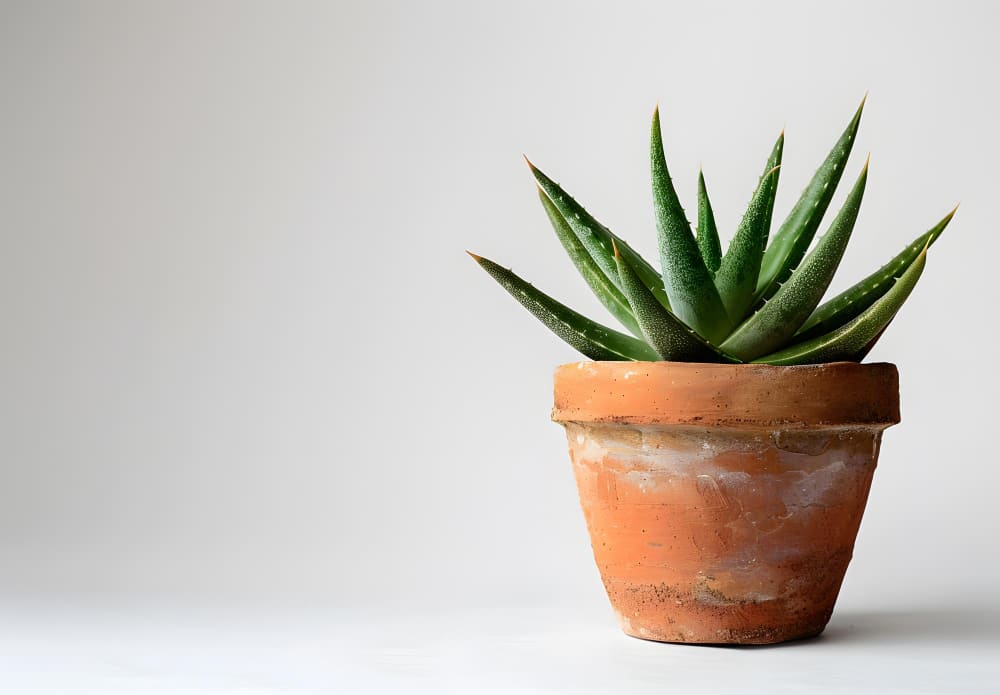
Plant Description
Structure and Varieties
Aloe Vera, or Aloe barbadensis miller, is a succulent plant celebrated for its medicinal properties and decorative appeal. It features fleshy, thick leaves arranged in rosettes, which can grow up to 60 cm in length. The leaves have sharp edges and contain a clear gel widely used in cosmetics and medicine. Varieties include the compact Aloe aristata and the tree-like Aloe arborescens, each showcasing unique aesthetic traits.
Care and Maintenance
Light and Temperature
Aloe Vera thrives in bright, sunny conditions but can tolerate partial shade. For optimal growth, place the plant near a window with ample sunlight. The ideal temperature range is 18–24°C. Aloe is sensitive to cold, so it should be protected from drafts and low temperatures in winter.
Watering and Soil
Aloe requires moderate watering, especially during active growth periods. The soil should be well-draining, preferably a specialized succulent mix, to avoid waterlogging. Allow the soil to dry out completely between waterings. In winter, reduce watering to allow the plant to rest.
Benefits and Decorative Qualities
Medicinal Properties
The gel contained in aloe vera leaves is widely used in cosmetic and medical applications. It has soothing, moisturizing, and healing properties, making it an indispensable ingredient in creams, lotions, and balms. Additionally, aloe vera improves digestion and strengthens the immune system when used internally.
Decorative Appeal and Ease of Care
Aloe vera is not only beneficial but also aesthetically pleasing. Its upright, fleshy leaves add a fresh and exotic touch to any interior. The plant integrates seamlessly into various design styles, from minimalism to boho. Thanks to its low-maintenance nature and ability to thrive with minimal care, aloe vera is ideal for both novice and experienced plant enthusiasts.
Common Ivy (Hedera helix)
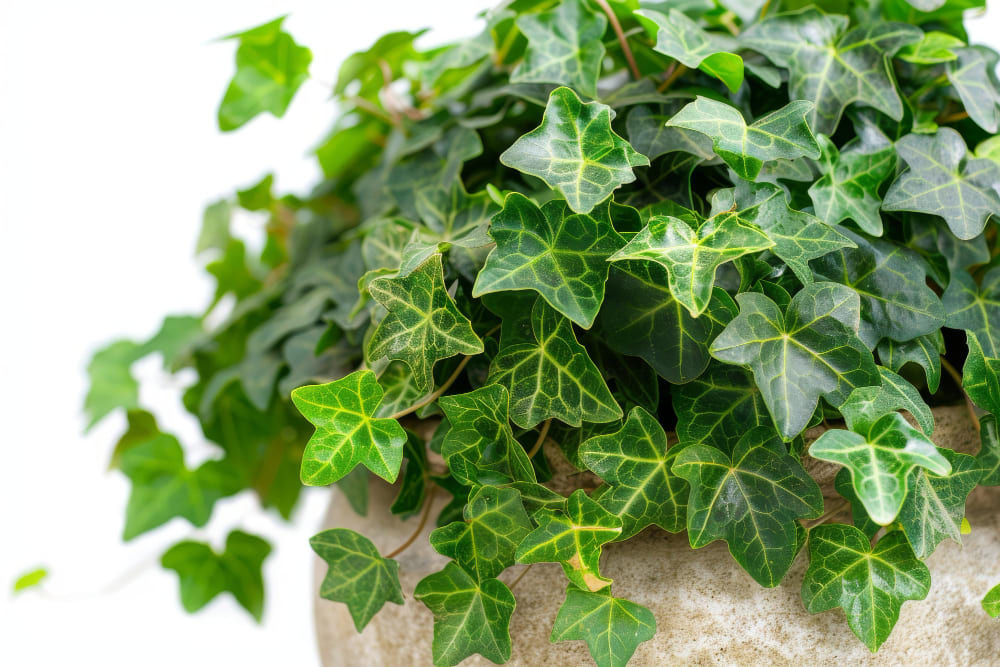
Plant Description
Types of Ivy
Common ivy, or Hedera helix, is an evergreen climbing plant widely used in interior design due to its versatility and decorative potential. Various types of ivy, such as common ivy (Hedera helix), Persian ivy (Hedera colchica), and Canary ivy (Hedera canariensis), differ in leaf shape, size, and growth rate, allowing for tailored choices for any space.
Growth Characteristics
Ivy is known for its rapid growth and ability to cling to supports, making it ideal for vertical gardens and hanging pots. Its leaves range from simple and heart-shaped to more intricate, lobed forms. Ivy thrives in cool, shaded areas but adapts well to varying light conditions, making it a versatile option for any room.
Care and Maintenance
Light and Humidity
Ivy prefers bright, indirect light but can also thrive in low-light environments. Avoid direct sunlight, which can scorch its leaves. The plant benefits from moderate humidity, so regular misting or a humidifier can be particularly helpful in dry indoor spaces.
Pruning and Shaping
Regular pruning is essential to maintain its decorative form and prevent overgrowth. Pruning encourages new growth and enhances foliage density. Ivy is easy to shape, allowing for creative arrangements and leaf patterns to suit various design preferences.
Benefits and Decorative Qualities
Green Aesthetic
Ivy adds vibrancy and natural freshness to interiors. Its lush foliage and ability to create dense greenery make it a perfect accent for any space. The plant complements other decorative elements and enhances both minimalist and elaborate interior styles.
Air Purification
Like many houseplants, ivy boasts excellent air-purifying properties. It effectively absorbs harmful substances such as formaldehyde and benzene, improving indoor air quality. Ivy also releases oxygen, creating a healthier and more comfortable living environment.
Peace Lily (Spathiphyllum wallisii)
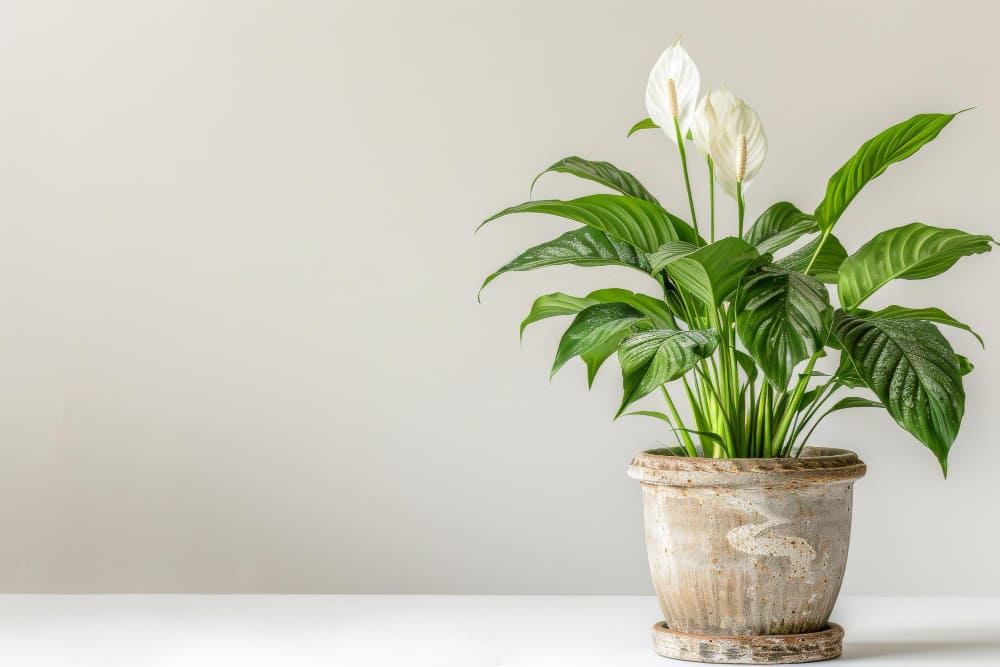
Plant Description
Appearance and Varieties
The peace lily, or Spathiphyllum wallisii, is one of the most popular houseplants, celebrated for its elegant white blooms and lush greenery. Its broad, dark green leaves create a dense canopy, while its white or cream-colored spathes bloom on tall stems, giving the plant a refined and graceful look. Several peace lily varieties vary in leaf size, shape, and flower hue, offering options for any interior.
Care and Maintenance
Light and Temperature Requirements
The peace lily prefers bright, indirect light but grows well in low-light conditions, making it a versatile choice for various spaces. The optimal temperature range is 18–24°C. The plant is sensitive to drafts and sudden temperature changes, so it’s best to maintain stable conditions.
Watering and Humidity
Regular watering is necessary to keep the peace lily healthy. The soil should remain consistently moist but not waterlogged to avoid root rot. Use soft, settled water and avoid splashing it on the leaves to prevent spots or fungal issues. High humidity encourages more abundant flowering, so misting the leaves or using a humidifier is beneficial.
Benefits and Decorative Qualities
Beautiful Blooms
The peace lily is known for its stunning spathes that can bloom for several months. The white or cream-colored flowers add a sense of purity and tranquility, enhancing any room’s elegance and sophistication. Its blooming not only pleases the eye but also fosters a calming atmosphere.
Air Purification
One of the peace lily’s greatest benefits is its ability to purify air from harmful substances. The plant effectively absorbs toxins such as formaldehyde, benzene, and trichloroethylene, improving indoor air quality. Additionally, it releases oxygen, promoting overall well-being and increased energy levels.
Spider Plant (Chlorophytum comosum)
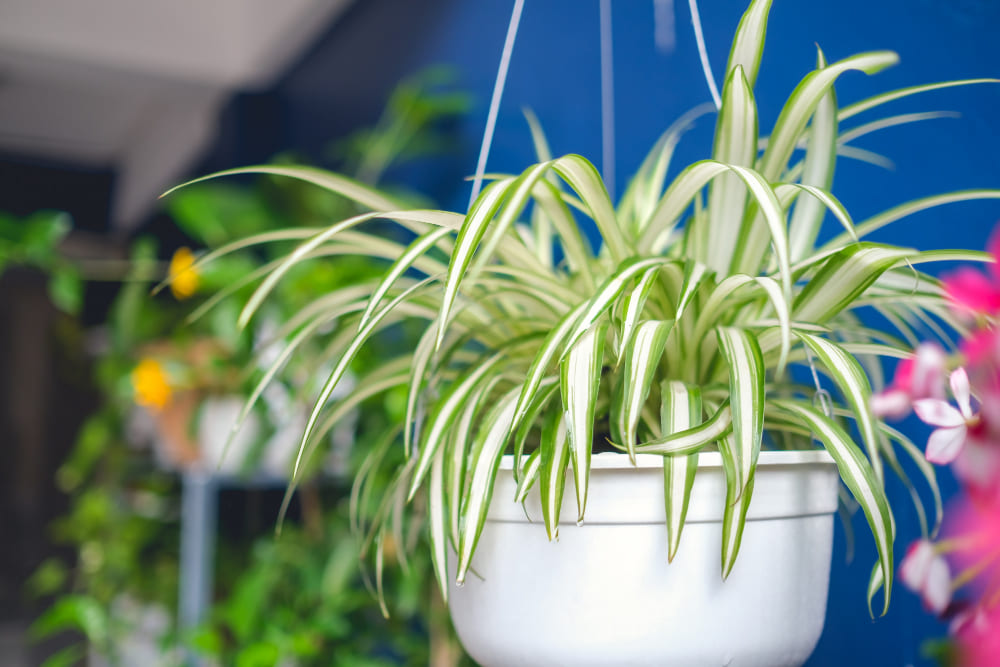
Plant Description
Appearance and Varieties
The spider plant (Chlorophytum comosum), also known as Spider Plant, gets its name from the characteristic "pups" that hang down from the main plant, resembling small spiders on a web.
Spider plants are widely appreciated for their long, narrow, graceful leaves. The leaves are typically green with white or yellowish stripes growing from a central rosette, giving the plant a light and airy appearance. Popular varieties include ‘Vittatum’ with white stripes and ‘Variegatum’ with cream-colored ones.
Care and Maintenance
Lighting Conditions
The spider plant thrives in bright, indirect light, which promotes more vigorous growth and vibrant leaf coloration. However, it can also grow well in low-light conditions, though its growth may slow, and the leaves may become paler. Avoid direct sunlight, as it can scorch the leaves.
Watering and Soil
Spider plants require regular watering, particularly during the active growth period in spring and summer. The soil should be well-drained and rich in organic matter. It is important to avoid both over-drying and overwatering, as either can harm the plant. During winter, reduce watering, allowing the soil to dry slightly between sessions.
Benefits and Decorative Qualities
Ease of Growing
The spider plant is celebrated for its low-maintenance nature, making it an excellent choice for beginners. It adapts easily to various lighting conditions and can thrive with minimal care. This plant is perfect for those seeking a simple yet beautiful interior decoration.
Propagation Ability
Spider plants propagate effortlessly through their "pups," which dangle from the mother plant. These small offshoots can be easily transplanted into separate pots, creating new plants with minimal effort. This rapid propagation ability makes the spider plant both decorative and practical for greening any space.
Cacti — Cactaceae
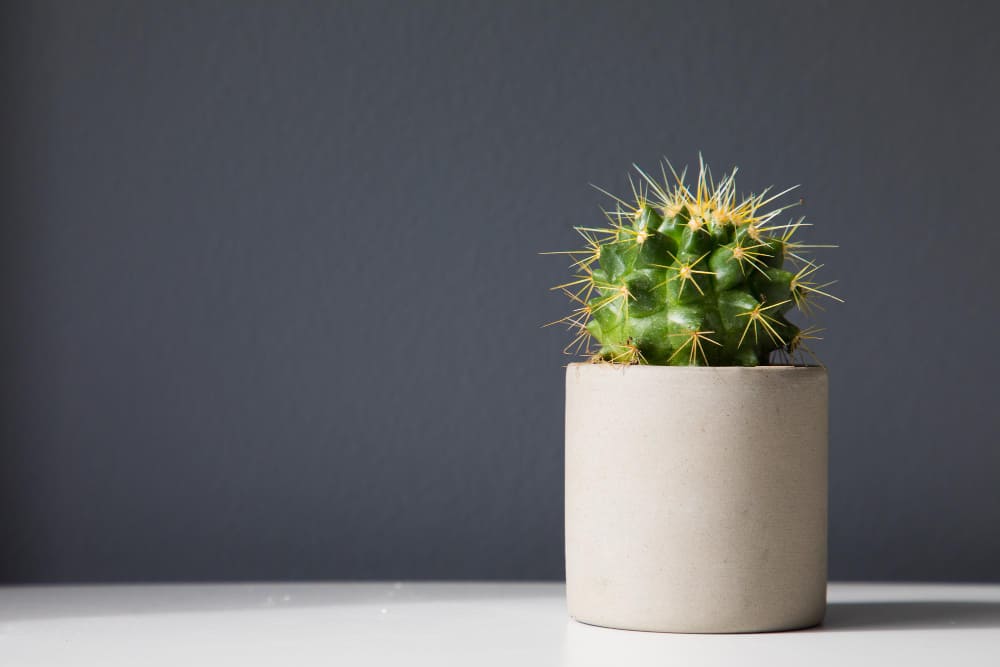
Plant Description
Types of Cacti
Cacti, belonging to the family Cactaceae, represent a diverse group of succulents known for their unique shapes and ability to survive extreme conditions. With over 2,000 species, cacti vary widely in size, form, and color. From small, spherical cacti to towering, columnar types, the variety allows for a perfect choice for any interior. Popular species include Prickly Pear (Opuntia), Rat Tail Cactus (Aporocactus flagelliformis), and African Milk Tree (Euphorbia trigona).
Structural Features
The defining feature of cacti is their ability to store water in their fleshy stems and leaves, enabling them to endure drought conditions. Cactus leaves are often reduced to spines or absent entirely, minimizing water loss through evaporation. Instead of leaves, cacti possess specialized structures, such as spines and ridges, which protect the plant from predation and help regulate stem temperature.
Care and Maintenance
Light and Temperature
Cacti prefer bright sunlight and require ample light for healthy growth and blooming. They are best placed near sunny windows or under additional lighting. The ideal temperature range for cacti is between 20–30°C during the day and not lower than 10°C at night. Many cacti are sensitive to cold, so they should be protected from low temperatures and drafts during winter.
Watering and Soil
Cacti require moderate watering, particularly during their active growth and flowering periods. The soil should be specially prepared for cacti, well-drained, and rich in minerals. Avoid overwatering, which can lead to root rot. During winter, reduce watering significantly, allowing the soil to dry out completely between sessions.
Benefits and Decorative Qualities
Low Maintenance Requirements
Cacti are renowned for their resilience and ability to thrive with minimal care. They are ideal for busy individuals or those with little experience in plant care. Cacti require infrequent watering and can go long periods without additional fertilization, making them a great choice for anyone seeking a beautiful yet low-maintenance plant.
Aesthetic Forms and Sizes
The wide variety of cacti shapes and sizes allows for the creation of unique arrangements and decorative accents in interiors. From compact, spherical species to majestic columns, each cactus has its own individuality and charm. Their exotic appearance adds a touch of wilderness and natural harmony, making cacti a perfect addition to any design style.
Fern — Pteridophyta
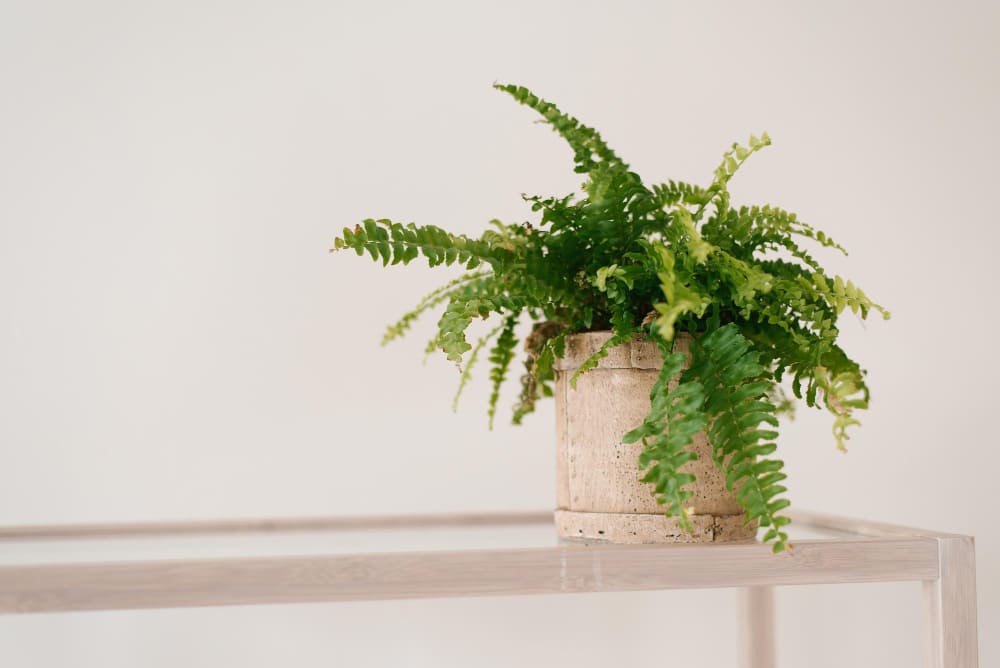
Plant Description
Types of Ferns
Ferns, belonging to the Pteridophyta class, are an ancient group of plants known for their delicate foliage and decorative qualities. Many fern species exist, each with unique characteristics. Popular types include Boston Fern (Nephrolepis exaltata 'Bostoniensis'), Sword Fern (Nephrolepis exaltata), and Maidenhair Fern (Adiantum). These plants differ in leaf shape and size, allowing for the perfect selection for any interior.
External Characteristics
Ferns are characterized by intricately divided, feathery fronds that give them a light and airy appearance. Leaves can be smooth or have fine serrations, depending on the species. Ferns have a dense, bushy structure that creates a lush, green presence in any space. Some fern species develop creeping stems, adding additional volume and visual interest.
Care and Maintenance
Humidity and Lighting
Ferns thrive in high-humidity environments and bright, indirect light. They do well in spaces with good ventilation and ample natural light. However, direct sunlight can scorch their leaves, so it’s best to place ferns in areas with soft, diffused light. In low-humidity conditions, using humidifiers or regular misting helps maintain optimal moisture levels.
Watering and Soil
Ferns require consistent watering to keep the soil evenly moist. The soil should be well-drained and rich in organic matter, providing essential nutrients and preventing waterlogging. Avoid letting the soil dry out completely, especially during active growth periods. Regular misting also helps maintain humidity and keeps leaves free of dust.
Benefits and Decorative Qualities
Green Accent in Interiors
Ferns bring rich greenery and natural freshness to any interior. Their delicate fronds create a cozy and relaxing atmosphere, making spaces feel more vibrant and harmonious. Ferns pair well with other decorative elements and can become a central focal point in any setting, whether a living room, office, or bedroom.
Air Purification
Ferns are renowned for their excellent air-purifying abilities. They effectively absorb harmful substances such as formaldehyde and xylene, improving indoor air quality. Additionally, ferns release oxygen and increase air humidity, contributing to better overall well-being and creating a healthier living environment.
Jasmine — Jasminum spp.
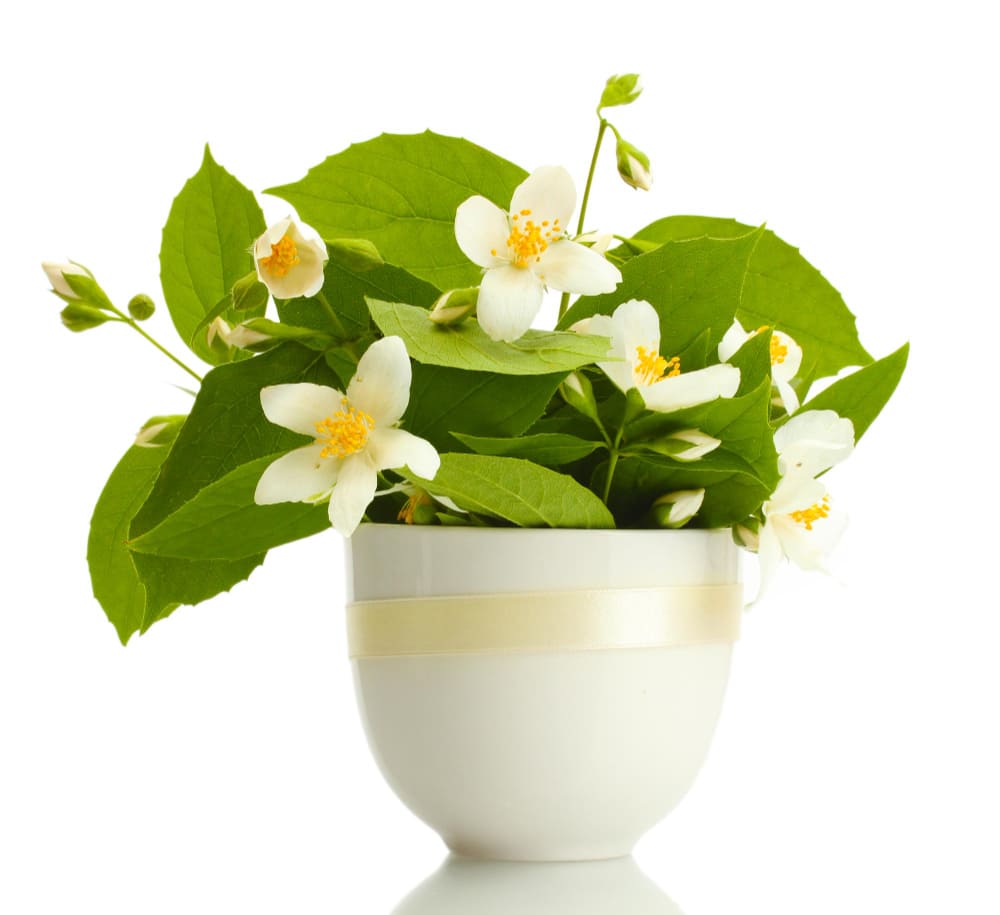
Plant Description
Types of Jasmine
Jasmine, or Jasminum spp., is a genus of plants that includes over 200 species of shrubs and climbers. These plants are known for their fragrant flowers and decorative foliage. Popular species include Arabian jasmine (Jasminum sambac), common jasmine (Jasminum officinale), and pink jasmine (Jasminum polyanthum). Each species has unique characteristics, allowing for tailored choices for different interiors.
Blooming Characteristics
Jasmine is celebrated for its exquisite, fragrant flowers that can bloom at various times of the year, depending on the species. Jasmine flowers are typically star-shaped and grow in clusters. Their white and yellow petals give the plant an elegant and refined appearance. Jasmine blooms not only please the eye but also fill the room with a delightful fragrance, creating a cozy and serene atmosphere.
Care and Maintenance
Lighting and Temperature Conditions
Jasmine prefers bright but indirect light, which encourages abundant blooming. An ideal spot is near east- or west-facing windows, where the plant receives ample light without the risk of leaf burn from direct sunlight. The optimal temperature range for jasmine is between 15–25°C. The plant is sensitive to sudden temperature changes and drafts, so avoid placing it near air conditioners or heaters.
Watering and Fertilization
Regular watering is essential to keep the soil moist, but overwatering should be avoided to prevent root rot. During the active growth and blooming period, jasmine requires more frequent watering, while in winter, watering can be reduced. Fertilize jasmine during spring and summer using balanced fertilizers for flowering plants to strengthen the root system and promote abundant blooming.
Benefits and Decorative Qualities
Fragrant Flowers
One of jasmine’s key attractions is its incredibly pleasant fragrance, which fills the room, creating a romantic and cozy atmosphere. The scent of jasmine not only delights the senses but also promotes relaxation and reduces stress levels, making it an ideal choice for bedrooms or living rooms.
Aesthetic Appeal
Jasmine’s elegant and graceful appearance pairs beautifully with various interior styles, from classic to modern. Its lush flowers and dense greenery create a striking visual accent, adding freshness and vibrancy to any space. Jasmine can also be used for vertical arrangements and hanging baskets, adding dynamics and volume to the interior.
Begonia — Begonia spp.

Plant Description
Types of Begonias
Begonia, or Begonia spp., is a vast genus of plants comprising over 1,800 species. These plants are notable for their diverse forms, sizes, and leaf and flower colors. Popular species include wax begonia (Begonia semperflorens) and scarlet begonia (Begonia coccinea). Each variety boasts unique decorative features, making begonias a versatile choice for any interior.
Leaf and Flower Features
Begonia leaves often have unusual shapes and vibrant colors, making them particularly attractive. Leaves can be simple, heart-shaped, or divided into several lobes, with glossy or matte surfaces. Begonia flowers come in various shapes and colors, ranging from soft pink and white to bright red and orange hues. The plant’s prolonged blooming period makes it a popular choice for room decoration.
Care and Maintenance
Lighting and Temperature
Begonia thrives in bright but indirect light, which promotes vigorous blooming and healthy growth. Place the plant in well-ventilated areas away from direct sunlight, which can scorch the leaves. The optimal temperature range for begonias is between 18–24°C. Begonias are sensitive to cold, so avoid exposing them to low temperatures and drafts in winter.
Watering and Soil
Begonias require regular watering to keep the soil consistently moist but not waterlogged. Use well-draining soil enriched with organic matter to prevent water stagnation and root diseases. During active growth and blooming, increase watering, but reduce it during winter. Biweekly fertilization with liquid fertilizers for flowering plants supports abundant blooms and healthy growth.
Benefits and Decorative Qualities
Variety of Forms and Colors
Begonias captivate with their variety of forms and colors, making them suitable for any interior and personal preference. Their bright and vivid petal hues create striking visual accents, adding liveliness and beauty to a room. The many begonia varieties allow for creative compositions and combinations, offering unique decorative solutions.
Ease of Care
Despite their decorative appeal, begonias are relatively low-maintenance, making them a popular choice for both experienced and novice plant enthusiasts. They adapt easily to various lighting and temperature conditions and recover quickly from stress. Their resilience makes begonias a long-lasting and beautiful addition to any space.
Calathea — Calathea spp.
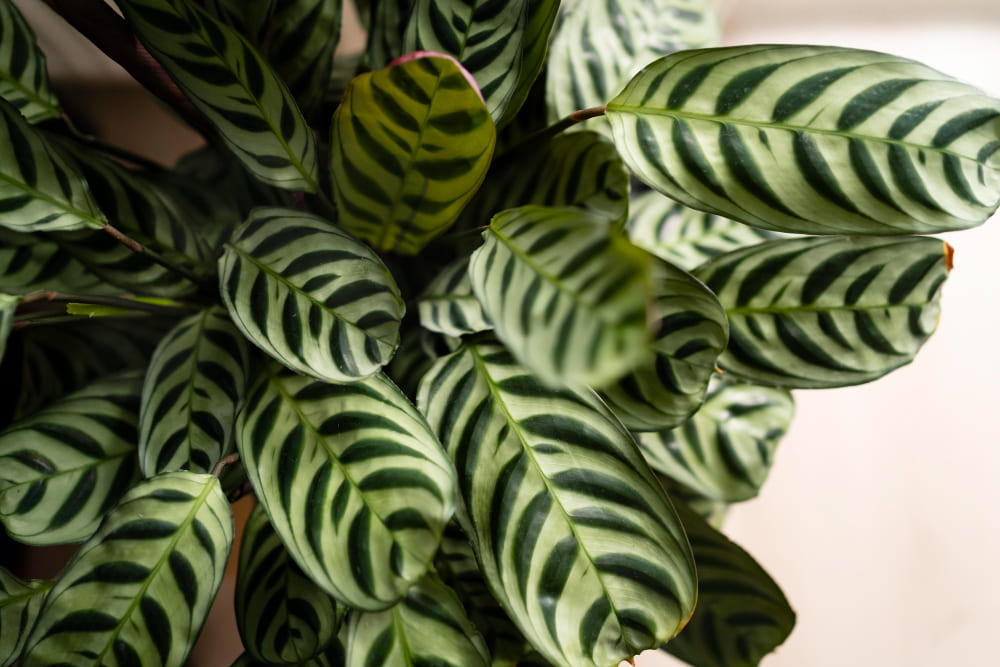
Plant Description
Appearance and Varieties
Calathea, or Calathea spp., is a genus of tropical plants renowned for its decorative foliage with vibrant patterns and diverse shades. Popular species include Calathea lancifolia, Calathea ornata, and Calathea orbifolia. Each variety features unique leaf patterns, adding to the plant's appeal and making it a favored choice for interior decoration.
Care and Maintenance
Humidity and Lighting
Calathea thrives in high humidity and bright, indirect light. It performs well in rooms with good ventilation and regular misting. Avoid placing Calathea in areas with direct sunlight, which can scorch its leaves. The optimal temperature range for Calathea is 18–24°C, providing ideal conditions for growth and development.
Watering and Fertilization
Calathea requires consistent watering to keep the soil evenly moist but not waterlogged. Use soft, chlorine-free, and fluoride-free water to prevent leaf damage. The soil should be well-drained and rich in organic matter. Fertilize monthly during the spring and summer using balanced fertilizers for ornamental plants to enhance leaf coloration and healthy growth.
Benefits and Decorative Qualities
Striking Leaf Patterns
One of Calathea's main attractions is its stunning foliage with unique patterns and vivid colors. The leaves are adorned with various designs, including stripes, spots, and swirls in shades of green, pink, and purple. These intricate patterns make Calathea a perfect focal point in any interior, adding elegance and visual interest.
Aesthetic Appeal
Calathea’s refined and elegant appearance complements a variety of design styles, from modern minimalism to eclectic boho. Its lush greenery and vibrant patterns bring a sense of natural freshness and harmony, making spaces feel more inviting and lively. Calathea pairs well with other ornamental plants, adding diversity and dynamics to interior compositions.
Monstera (Monstera deliciosa)
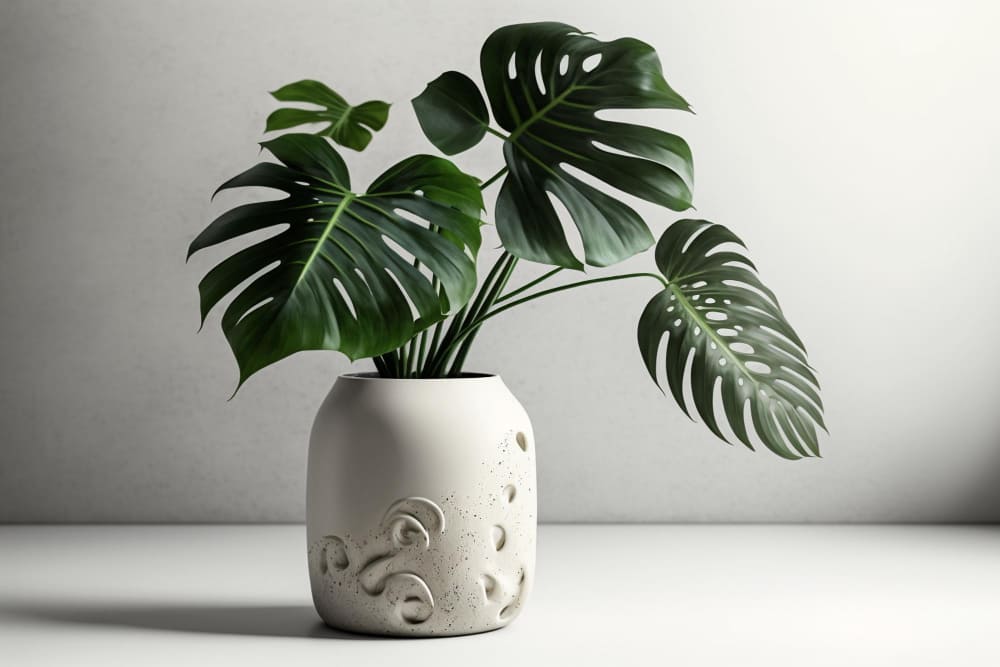
Plant Description
Types of Monstera
Monstera, or Monstera deliciosa, is one of the most popular and recognizable houseplants, celebrated for its large, split leaves. Varieties include Monstera deliciosa, Monstera adansonii, and Monstera obliqua. Each species differs in leaf shape and size, allowing you to choose the perfect option for your interior.
Growth and Leaf Features
Monstera is known for its rapid growth and large leaves with distinctive splits and holes, giving it an exotic appearance. Its leaves can grow significantly larger with proper care and often have a heart-shaped form with deep cuts. These features make Monstera a striking decorative element for creating a natural and stylish interior.
Care and Maintenance
Lighting and Temperature Requirements
Monstera prefers bright, indirect light but can adapt to lower light conditions. Direct sunlight may scorch its leaves, so placing it in areas with filtered light or partial shade is recommended. The ideal temperature range for Monstera is 18–27°C. The plant is sensitive to cold and drafts, so maintaining a stable temperature in winter is essential.
Watering and Soil
Monstera requires regular watering, especially during its active growth and blooming periods. The soil should be well-drained and rich in organic matter to prevent water stagnation and root issues. Allow the top layer of soil to dry slightly between waterings to avoid overwatering. Fertilize monthly with liquid fertilizers for ornamental plants to promote healthy growth and lush foliage.
Benefits and Decorative Qualities
Exotic Appearance
Monstera’s exotic and unique look makes it an excellent choice for creating vibrant and stylish interiors. Its large, split leaves add a tropical flair and natural freshness to spaces, creating a lush and inviting atmosphere. Monstera often serves as a centerpiece in rooms, drawing attention with its stunning presence.
Air Purification
Monstera is not only beautiful but also beneficial for health. It effectively removes harmful substances like formaldehyde and benzene, improving indoor air quality. Additionally, it releases oxygen, enhancing overall well-being and energy levels. Having Monstera in your home fosters a healthier and more comfortable living environment.
Pachira aquatica (Money Tree)
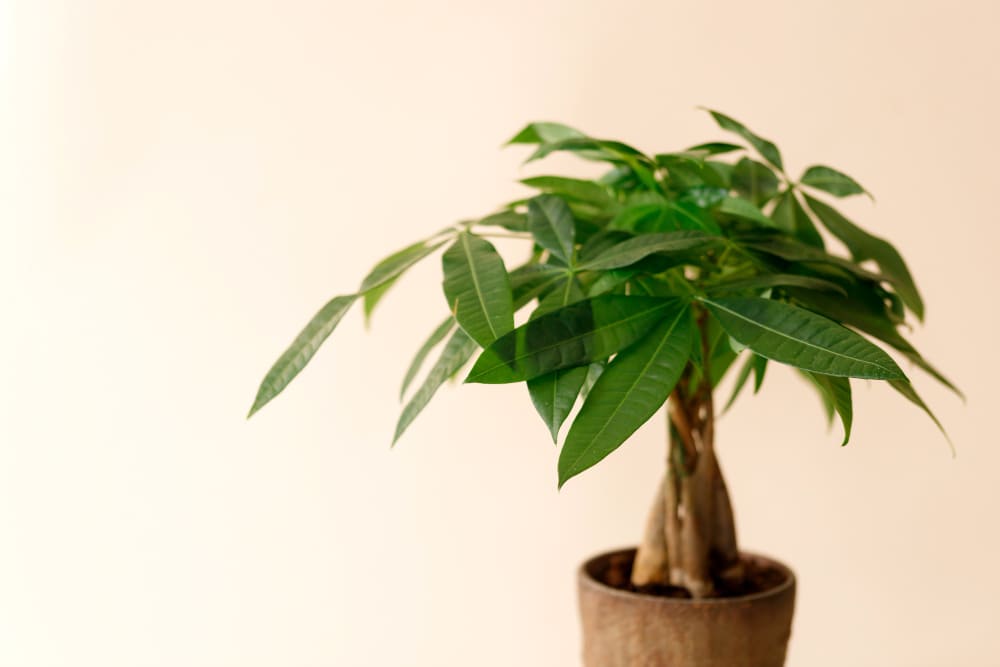
Plant Description
Appearance and Symbolism
Pachira aquatica, commonly known as the "Money Tree" in the UK, is a popular houseplant symbolizing luck and prosperity. This tropical tree features a smooth braided trunk and large palmate leaves in vibrant green, giving it an exotic and attractive look. The braided trunk is a decorative technique often applied to enhance its unique appearance. Pachira is widely used to adorn office and residential interiors, adding elegance and style.
Note: In Russia, "Money Tree" commonly refers to the Jade Plant (Crassula ovata), known for its fleshy leaves. However, in the UK, "Money Tree" specifically refers to Pachira aquatica.
Care and Maintenance
Light and Temperature
Pachira aquatica prefers bright, indirect light but can also grow in partial shade. Avoid direct sunlight, which may scorch its leaves. The ideal temperature range for growth is 18–24°C. The plant is sensitive to cold temperatures and drafts, so it should be placed in a warm area without sudden temperature fluctuations during winter.
Watering and Soil
Pachira aquatica requires moderate watering. Allow the top layer of soil to dry out between waterings to prevent overwatering, which can lead to root rot. The soil should be light and well-draining; a mix of universal potting soil with added sand or perlite is ideal. During the active growth period in spring and summer, increase watering slightly, while in winter, reduce it. Use soft, settled water for watering.
Benefits and Decorative Qualities
Symbol of Luck and Prosperity
In East Asian cultures, Pachira aquatica is considered a symbol of good fortune and financial success. Placing this plant in a home or office is believed to attract positive energy and promote prosperity. Beyond its symbolic meaning, Pachira enhances the decor of any space with its unique braided trunk and lush foliage.
Ease of Maintenance
One of Pachira’s standout features is its low-maintenance nature. It adapts well to various lighting conditions and doesn’t require frequent watering or special care. This makes it an excellent choice for busy individuals or novice plant enthusiasts looking to add greenery to their interiors without the hassle.
Anthurium (Anthurium andraeanum)
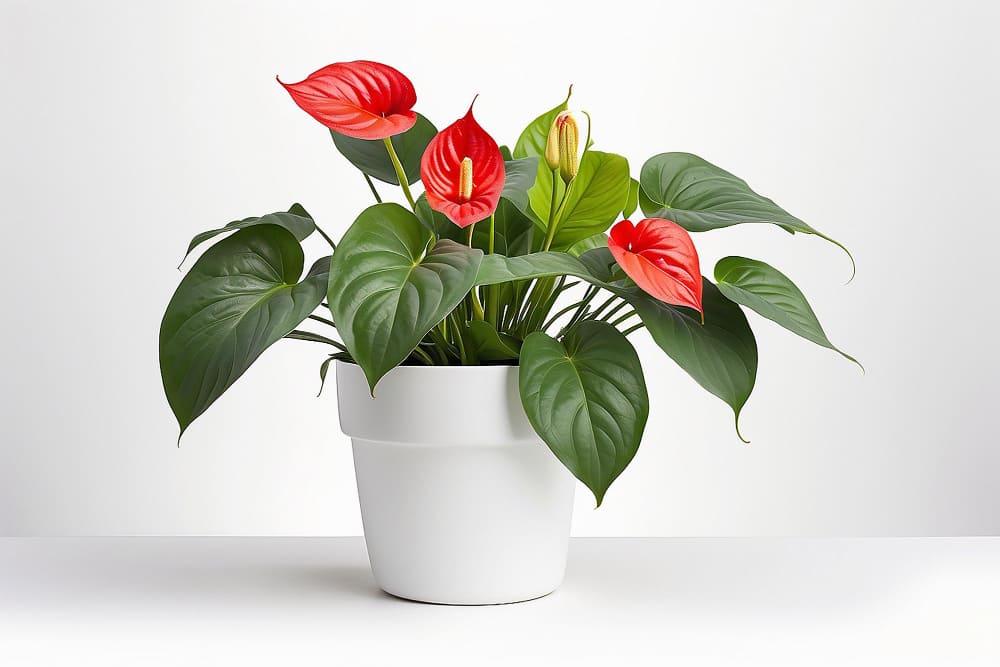
Plant Description
Types of Anthuriums
Anthurium, or Anthurium andraeanum, is a genus of tropical plants comprising over 800 species. Known for their vibrant and long-lasting flowers as well as decorative foliage, popular species include Red Anthurium (Anthurium andraeanum), White Anthurium (Anthurium clarinervium), and Black Anthurium (Anthurium scherzerianum). Each variety has unique characteristics, making Anthuriums suitable for any interior.
Flowering Characteristics
Anthurium is celebrated for its striking flowers, consisting of a vibrant spathe and a slender spadix. The flowers come in various shades, including red, pink, white, and orange, making them a versatile decorative choice. With proper care, Anthuriums bloom for several months, making them a favorite for interior decoration.
Care and Maintenance
Lighting Conditions
Anthurium thrives in bright, indirect light, which supports intense flowering and healthy growth. Direct sunlight can scorch the leaves, so placing the plant in filtered light or using curtains to diffuse the light is recommended. The optimal temperature range for Anthurium is 18–27°C. It is sensitive to cold and drafts, so maintain a stable temperature during winter.
Watering and Humidity
Anthurium requires regular watering to keep the soil consistently moist but not waterlogged. The soil should be well-drained and rich in organic matter to prevent water stagnation and root diseases. Use soft, settled water without chlorine or fluoride to avoid root damage. High humidity enhances flowering, so regular misting or using a humidifier is beneficial.
Benefits and Decorative Qualities
Bright and Long-Lasting Flowers
One of Anthurium’s key advantages is its bright and long-lasting flowers, which can remain vibrant for months. The bold petal colors and extended blooming period make Anthurium an excellent choice for creating vibrant and stylish interiors. Its flowers often serve as a focal point in room decor, drawing attention with their brilliance and beauty.
Aesthetic Value
Anthurium offers high aesthetic value with its elegant and sophisticated appearance. Its glossy, large leaves add freshness and liveliness to interiors. Anthurium pairs well with other decorative plants and accessories, allowing for harmonious and stylish compositions. Its refined look makes it a perfect choice for decorating both residential and office spaces.
Conclusion
In the modern world, houseplants play an important role in creating a cozy and healthy atmosphere in indoor spaces. Choosing the right plants requires considering factors such as lighting conditions, humidity levels, watering needs, and maintenance requirements. From the top 15 most popular houseplants in the UK, everyone can find something that suits their preferences and care abilities. For those seeking low-maintenance plants, options like Sansevieria or cacti are ideal. Enthusiasts of vibrant and fragrant flowers can choose orchids, jasmine, or Anthurium. To bring greenery and natural freshness, ferns, ivy, or Monstera are excellent choices.
When selecting plants, it’s also important to consider their decorative qualities and how well they fit into your interior. Exotic species like hibiscus or Monstera add brightness and a tropical vibe, while more classic plants like begonia or peace lily offer elegance and sophistication. Regardless of your preferences, the right plant selection can help create a harmonious and stylish space that enhances quality of life and well-being.
Advantages of Wholesale Purchasing with Flora Market
Buying houseplants wholesale through Flora Market is the optimal solution for flower shops, wholesale floral companies, and event organizers. By partnering with trusted suppliers worldwide, the platform offers a wide range of high-quality plants perfectly suited for commercial needs.
The platform ensures convenient order processing and flexible delivery options. Fast processing and strict quality control guarantee that plants arrive fresh and in excellent condition.





